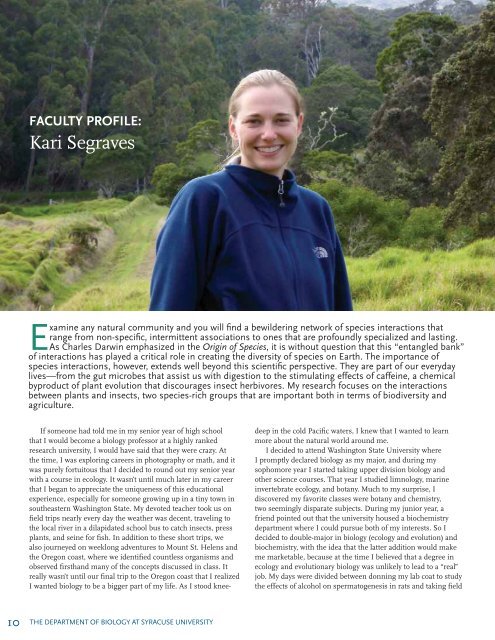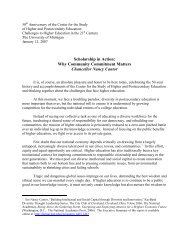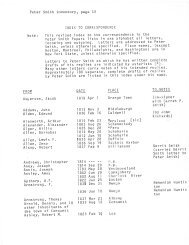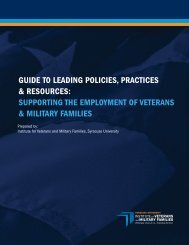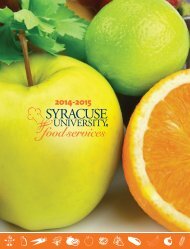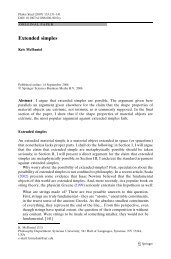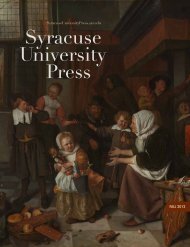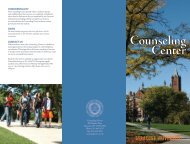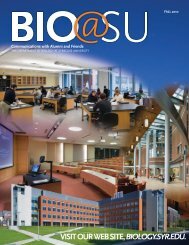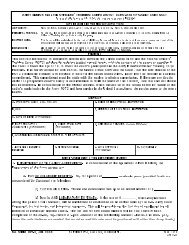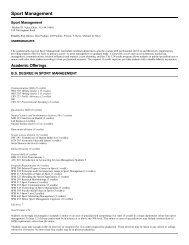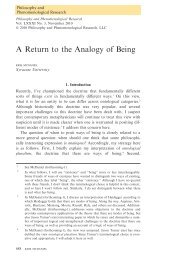FACULTY PROFILE:Kari SegravesExamine any natural community and you will find a bewildering network <strong>of</strong> species interactions thatrange from non-specific, intermittent associations to ones that are pr<strong>of</strong>oundly specialized and lasting.As Charles Darwin emphasized in <strong>the</strong> Origin <strong>of</strong> Species, it is without question that this “entangled bank”<strong>of</strong> interactions has played a critical role in creating <strong>the</strong> diversity <strong>of</strong> species on Earth. The importance <strong>of</strong>species interactions, however, extends well beyond this scientific perspective. They are part <strong>of</strong> our everydaylives—from <strong>the</strong> gut microbes that assist us with digestion to <strong>the</strong> stimulating effects <strong>of</strong> caffeine, a chemicalbyproduct <strong>of</strong> plant evolution that discourages insect herbivores. My research focuses on <strong>the</strong> interactionsbetween plants and insects, two species-rich groups that are important both in terms <strong>of</strong> biodiversity andagriculture.If someone had told me in my senior year <strong>of</strong> high schoolthat I would become a biology pr<strong>of</strong>essor at a highly rankedresearch university, I would have said that <strong>the</strong>y were crazy. At<strong>the</strong> time, I was exploring careers in photography or math, and itwas purely fortuitous that I decided to round out my senior yearwith a course in ecology. It wasn’t until much later in my careerthat I began to appreciate <strong>the</strong> uniqueness <strong>of</strong> this educationalexperience, especially for someone growing up in a tiny town insou<strong>the</strong>astern Washington State. My devoted teacher took us onfield trips nearly every day <strong>the</strong> wea<strong>the</strong>r was decent, traveling to<strong>the</strong> local river in a dilapidated school bus to catch insects, pressplants, and seine for fish. In addition to <strong>the</strong>se short trips, wealso journeyed on weeklong adventures to Mount St. Helens and<strong>the</strong> Oregon coast, where we identified countless organisms andobserved firsthand many <strong>of</strong> <strong>the</strong> concepts discussed in class. Itreally wasn’t until our final trip to <strong>the</strong> Oregon coast that I realizedI wanted biology to be a bigger part <strong>of</strong> my life. As I stood kneedeepin <strong>the</strong> cold Pacific waters, I knew that I wanted to learnmore about <strong>the</strong> natural world around me.I decided to attend Washington State <strong>University</strong> whereI promptly declared biology as my major, and during mysophomore year I started taking upper division biology ando<strong>the</strong>r science courses. That year I studied limnology, marineinvertebrate ecology, and botany. Much to my surprise, Idiscovered my favorite classes were botany and chemistry,two seemingly disparate subjects. During my junior year, afriend pointed out that <strong>the</strong> university housed a biochemistrydepartment where I could pursue both <strong>of</strong> my interests. So Idecided to double-major in biology (ecology and evolution) andbiochemistry, with <strong>the</strong> idea that <strong>the</strong> latter addition would makeme marketable, because at <strong>the</strong> time I believed that a degree inecology and evolutionary biology was unlikely to lead to a “real”job. My days were divided between donning my lab coat to study<strong>the</strong> effects <strong>of</strong> alcohol on spermatogenesis in rats and taking field10 THE DEPARTMENT OF BIOLOGY AT SYRACUSE UNIVERSITY
trips to northcentral Idaho to survey plantand insect populations.As I learned more about each<strong>of</strong> my projects, I found myselfgravitating toward my research on <strong>the</strong>plant Heuchera, or alum root. I wasinvestigating a moth (Greya) that bothfeeds on <strong>the</strong>se plants and pollinates <strong>the</strong>m,but what I found particularly intriguingwere <strong>the</strong> genetic features <strong>of</strong> <strong>the</strong> plants.Across its relatively small geographicIt really wasn’t until ourfinal trip to <strong>the</strong> Oregoncoast that I realized Iwanted biology to be abigger part <strong>of</strong> my life.As I stood knee-deep in<strong>the</strong> cold Pacific waters,I knew that I wanted tolearn more about <strong>the</strong>natural world aroundme.range, we found that <strong>the</strong> plants varied inchromosome number, with some having<strong>the</strong> typical diploid set <strong>of</strong> chromosomes(two <strong>of</strong> each chromosome) whileo<strong>the</strong>rs were tetraploid (four <strong>of</strong> eachchromosome). On top <strong>of</strong> this, <strong>the</strong>re wasalso some evidence for hybridizationwith ano<strong>the</strong>r Heuchera species. Theseinteresting findings led me to stay atWSU for a master’s degree, where Istudied how <strong>the</strong>se genetic factors affected<strong>the</strong> plant’s ecological interactions withGreya moths and <strong>the</strong> o<strong>the</strong>r insects thatvisited <strong>the</strong> flowers. I decided to use acombination <strong>of</strong> lab and field approachesin my project, employing moderntechniques in “molecular ecology”to assess <strong>the</strong> relatedness <strong>of</strong> plantsand apply this to my field research. Iwas surprised to learn that in somepopulations <strong>the</strong> diploid and tetraploidplants differed slightly in flower shape,whereas in o<strong>the</strong>r populations <strong>the</strong> twochromosomal complements were difficultto distinguish. What was really excitingwas <strong>the</strong> finding that, even when <strong>the</strong>rewas no apparent physical difference,both Greya and various o<strong>the</strong>r insectvisitors could distinguish between <strong>the</strong>two genetic forms. For instance, I foundthat bumblebee queens preferred tocollect nectar from tetraploids whereas<strong>the</strong> workers <strong>of</strong> <strong>the</strong> same species foragednearly exclusively on diploid plants. Soin instances when I was challenged to tell<strong>the</strong> two types <strong>of</strong> plants apart even with mymolecular toolkit, I found it interestingthat <strong>the</strong> flower visitors possessed anunknown mechanism to distinguish<strong>the</strong>m. Although I enjoyed working in <strong>the</strong>lab, it was <strong>the</strong> field research that solidifiedmy desire to continue on with a Ph.D.After spending several years workingon <strong>the</strong> Greya moths that pollinated andfed on Heuchera, I became interestedin how mutualistic associations evolve.Mutualisms are interactions betweenspecies where both partners benefitfrom <strong>the</strong> association. For example, <strong>the</strong>female moths that forage for nectar onHeuchera pollinate <strong>the</strong> plant and alsolay eggs in <strong>the</strong> flowers. Once <strong>the</strong> larvaehatch, <strong>the</strong>y feed on a small fraction <strong>of</strong><strong>the</strong> plant’s seeds, so both <strong>the</strong> moth andplant benefit from <strong>the</strong> interaction. Asa master’s student I began to focus onhow <strong>the</strong> balance is maintained betweenpartners in a mutualistic association, andwhy one partner doesn’t take advantage <strong>of</strong><strong>the</strong> o<strong>the</strong>r such that it gains more from <strong>the</strong>interaction. For instance, what prevents<strong>the</strong> moths from laying so many eggs that<strong>the</strong> larvae consume all <strong>of</strong> <strong>the</strong> seeds? Inessence, why don’t moths cheat?Given my interest in <strong>the</strong> evolution<strong>of</strong> cheating in mutualism, I decided toattend Vanderbilt <strong>University</strong> for a Ph.D.where I was advised by Olle Pellmyr,a leading researcher studying howmutualisms evolve. He focused on <strong>the</strong>interaction between yucca plants andyucca moths (Tegeticula) as his mainstudy system. I saw many advantages toworking with Olle on Tegeticula as <strong>the</strong>semoths were familiar because <strong>the</strong>y areclose relatives to <strong>the</strong> Greya moths that Istudied on Heuchera, and <strong>the</strong> yucca-yuccamoth interaction is a textbook example<strong>of</strong> mutualism. Yuccas, or century plants,feature prominently in desert ecosystemsas an important resource for manyanimals. The plants and <strong>the</strong>ir flowersYucca aloifoliaYucca shidigeraYucca filamentosaFALL <strong>2011</strong>11


